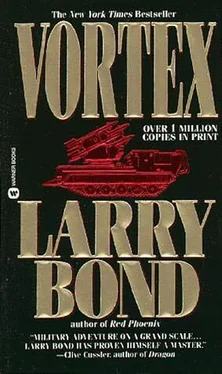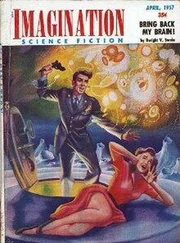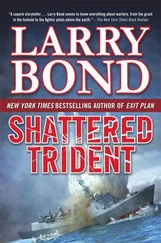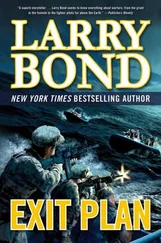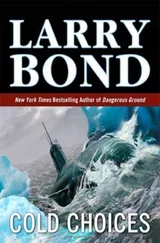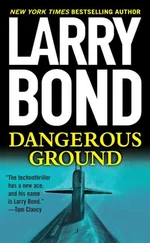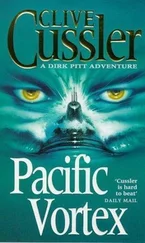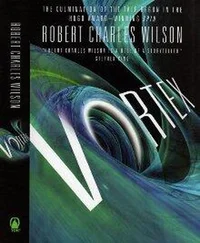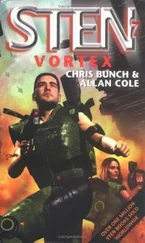Several thousand men lay dead or dying among the hundreds of wrecked vehicles littering Route 47. Gen. Antonio Vega’s Third
Tactical Group had been annihilated.
DECTECTION AND TRACKING CENTER, NORTH AMERICAN AIR DEFENSE COMMAND
Maj. Bill O’Malley, USAF, sat bolt upright in his chair as one of the red phones buzzed. Throwing down the duty schedule, he grabbed the receiver.
“Watch officer.”
“Sir, this is Sergeant Ohira. We have a Nucflash. Detonation appears to be over South Africa. “
O’Malley leaned over the row of consoles in front of him. Looking down from the watch officer’s elevated position, he saw Sergeant Ohira waving from his station on the operations floor below.
“I’ll be right down.” He hung up and raced downstairs.
Ohira’s panel normally showed a map of the world with the positions of
America’s DSP Early Warning satellites displayed. But it was computer generated so he could modify and expand the image as needed. Right now it showed the southern third of the African continent. A glowing circular symbol flashed repeatedly near the center of the screen.
“Let’s see the numbers,” O’Malley ordered.
Ohira replaced the map with a screen showing the data they’d received from one of their satellites. While hovering in geosynchronous orbit over the
Indian Ocean, it had sensed the infrared signature of a nuclear detonation and instantly relayed the data to NORAD’s computers. Sophisticated processors evaluated the available information and assessed the blast as being that of a relatively small weapon-one in the twenty-kiloton range. Other numbers showed that it had exploded at latitude 26’ 15’ south and longitude 27’ 45’ east.
From what O’Malley could see, the Nucflash looked reliable. Ohira called up more data, this time from seismic stations around the world. The seismic data matched that provided by their satellite.
“Give me a map overlay. ” Roads and cities appeared with
the location of the detonation marked. Three concentric circles surrounded the point, showing projected zones of total, heavy, and light damage. An arrow showed wind direction.
“Goddamn it, they’ve really done it. They’ve really frigging done it.”
“Why would the Russians bomb South Africa?” Ohira asked.
O’Malley shook his head.
“The South Africans did it, Sergeant. They’ve used a goddamned nuke on their own goddamned territory. ” Aware that he sounded rattled, he tried to bite down on the stream of profanity rolling out over his tongue.
Ohira looked puzzled.
“Doesn’t make any sense to me, Major.” The sergeant’s interests included mystery novels and computer games. He wasn’t really up on current events.
O’Malley sighed. There were more checks he could run, but first there were a few phone calls he had to make. The only reason that he’d delayed this long was that the blast posed no immediate threat to the United
States, even from the fallout, and he’d been sure his superiors would want to know more than just the time of detonation and the size of the blast.
Returning to his watch station, the major picked up another handset, this one labeled ics. As soon as he picked it up, he heard ringing at the other end.
“Colonel Howard, watch officer. “
“Sir, this is Major O’Malley at Cheyenne Mountain. We have a nuclear detonation .
CNN SPECIAL REPORT
CNN’s normal cycle of news, sports, and entertainment gossip was interrupted in mid-sentence. The anchorman, who’d been introducing a piece on a sports figure’s tax problems, suddenly stopped, distracted by something off screen.
A paper was passed to him, adroitly, so that the camera never caught a glimpse of the passer. The anchorman scanned it quickly, and for a moment his carefully shaped mask dropped-replaced by stunned shock and disbelief.
He glanced off camera again, looking for reassurance, then made a visible and successful effort to regain his composure.
“This just in. For only the third time in history, a nuclear weapon has been used in anger. About an hour ago, Cuban troops invading South Africa were attacked by South African Air Force warplanes, which dropped one atomic weapon, inside its own borders.
“Department of Defense sources have confirmed the detection of a nuclear explosion in South Africa, describing it as a ‘low-yield’ burst. Cuba’s foreign ministry, though quick to point out that it has no independent confirmation of this attack, strongly condemned the use of nuclear weapons as I an act of barbarism’ that ‘revealed the true nature of Pretoria’s racist and fascist regime.”
“The White House, while saying the President is ‘deeply concerned by recent developments,” is reportedly awaiting definitive information before releasing an official statement. “
Another message slid across the desk. This time the anchorman took it in stride.
“In a new twist, South Africa has admitted that it has used a nuclear weapon. According to a statement released simultaneously by the South
African Broadcasting Corporation and by Pretoria’s embassies worldwide, “South Africa will use its special weapons at times and places of its own choosing -without regard for the hypocritical squeamishness of other nations. “
The screen divided-one-half still showing CNN’s Atlanta studio, the other showing a crowded, noisy room as reporters milled around a small, flag-draped dais.
“We’re going live to our Pentagon correspondent for a Defense Department briefing…”
NOVEMBER 24-HEADQUARTERS, CUBAN EXPEDITIONARY FORCE, PIETERSBURG, SOUTH AFRICA
Military traffic moving south filled Pietersburg’s wide streets-rumbling past burned-out homes, crater-choked public parks, and barren, blasted jacaranda trees. Smoking piles of charred blue and pale-purple blossoms littered the ground beneath each tree. Stray dogs, some unfed for days, roamed side roads and alleys in packs.
The advancing Cuban troops had appropriated a small, two-story brick office building as Vega’s new forward headquarters. Col. Jose6 Suarez walked into the splinter-scarred building past piles of discarded papers and wrecked furniture heaped outside.
The building’s outer offices had been taken over by the expeditionary force’s supply, communications, and other support sections.
Worried-looking staff officers bustled back and forth from room to room as they tried, sometimes in vain, to manage the advance of Cuba’s two remaining columns.
5”
Others sat stunned, still horrified by the split-second annihilation of the
Third Tactical Group.
Suarez knew the confusion he saw here was only a fraction of the chaos sweeping the dead brigade’s rear areas. A dozen different supply, maintenance, and medical units, working to support what had been a spectacularly rapid advance, now found themselves suddenly fighting for their lives against local Afrikaner commandos. At the same time, they were working hard to save those few dazed survivors found wandering back down the highway. Well, he thought sadly, there won’t be any survivors left by tomorrow. Heat, a lack of potable water, and Boer bullets will see to that.
He moved deeper into the building and knocked quietly on a closed door. No answer. He turned the knob quietly and peered inside.
Gen. Antonio Vega, Liberator of Walvis Bay, victor of a dozen battles, the man who held a knife to South Africa’s throat, sat staring at a map. He held a sheaf of papers in his hands, the air reconnaissance photos taken over the site of the Third Brigade Tactical Group’s destruction. Suarez knew what those photos showed. He had given them, and the rest of the data on the column’s death, to Vega over two hours ago.
Читать дальше
